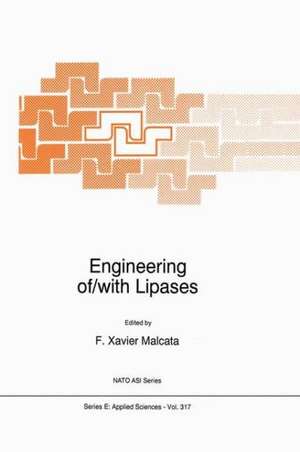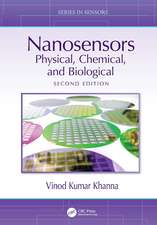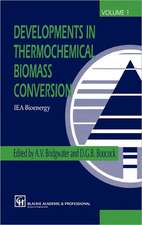Engineering of/with Lipases: NATO Science Series E:, cartea 317
Editat de F.X. Malcataen Limba Engleză Paperback – 26 sep 2011
| Toate formatele și edițiile | Preț | Express |
|---|---|---|
| Paperback (1) | 1832.08 lei 6-8 săpt. | |
| SPRINGER NETHERLANDS – 26 sep 2011 | 1832.08 lei 6-8 săpt. | |
| Hardback (1) | 1838.38 lei 6-8 săpt. | |
| SPRINGER NETHERLANDS – 31 mar 1996 | 1838.38 lei 6-8 săpt. |
Din seria NATO Science Series E:
- 24%
 Preț: 1570.65 lei
Preț: 1570.65 lei -
 Preț: 397.76 lei
Preț: 397.76 lei -
 Preț: 386.81 lei
Preț: 386.81 lei - 20%
 Preț: 346.24 lei
Preț: 346.24 lei -
 Preț: 424.33 lei
Preț: 424.33 lei - 18%
 Preț: 1224.18 lei
Preț: 1224.18 lei - 18%
 Preț: 1836.63 lei
Preț: 1836.63 lei - 18%
 Preț: 1229.28 lei
Preț: 1229.28 lei -
 Preț: 381.00 lei
Preț: 381.00 lei -
 Preț: 409.30 lei
Preț: 409.30 lei - 18%
 Preț: 1841.36 lei
Preț: 1841.36 lei - 5%
 Preț: 367.28 lei
Preț: 367.28 lei -
 Preț: 407.19 lei
Preț: 407.19 lei - 18%
 Preț: 1838.38 lei
Preț: 1838.38 lei -
 Preț: 420.28 lei
Preț: 420.28 lei -
 Preț: 399.29 lei
Preț: 399.29 lei -
 Preț: 398.74 lei
Preț: 398.74 lei - 18%
 Preț: 3026.13 lei
Preț: 3026.13 lei -
 Preț: 388.90 lei
Preț: 388.90 lei - 5%
 Preț: 391.06 lei
Preț: 391.06 lei - 18%
 Preț: 1228.62 lei
Preț: 1228.62 lei - 18%
 Preț: 1229.73 lei
Preț: 1229.73 lei - 18%
 Preț: 1234.46 lei
Preț: 1234.46 lei - 5%
 Preț: 3532.05 lei
Preț: 3532.05 lei - 18%
 Preț: 1840.11 lei
Preț: 1840.11 lei - 5%
 Preț: 378.80 lei
Preț: 378.80 lei - 18%
 Preț: 1227.84 lei
Preț: 1227.84 lei -
 Preț: 392.75 lei
Preț: 392.75 lei -
 Preț: 395.63 lei
Preț: 395.63 lei - 18%
 Preț: 2489.30 lei
Preț: 2489.30 lei - 5%
 Preț: 1429.27 lei
Preț: 1429.27 lei -
 Preț: 396.02 lei
Preț: 396.02 lei - 5%
 Preț: 2142.61 lei
Preț: 2142.61 lei - 18%
 Preț: 3049.16 lei
Preț: 3049.16 lei - 18%
 Preț: 1844.54 lei
Preț: 1844.54 lei -
 Preț: 403.53 lei
Preț: 403.53 lei
Preț: 1832.08 lei
Preț vechi: 2234.24 lei
-18% Nou
Puncte Express: 2748
Preț estimativ în valută:
350.57€ • 366.77$ • 291.22£
350.57€ • 366.77$ • 291.22£
Carte tipărită la comandă
Livrare economică 02-16 aprilie
Preluare comenzi: 021 569.72.76
Specificații
ISBN-13: 9789401072489
ISBN-10: 9401072485
Pagini: 640
Ilustrații: XVI, 618 p.
Dimensiuni: 160 x 240 x 34 mm
Greutate: 0.89 kg
Ediția:Softcover reprint of the original 1st ed. 1996
Editura: SPRINGER NETHERLANDS
Colecția Springer
Seria NATO Science Series E:
Locul publicării:Dordrecht, Netherlands
ISBN-10: 9401072485
Pagini: 640
Ilustrații: XVI, 618 p.
Dimensiuni: 160 x 240 x 34 mm
Greutate: 0.89 kg
Ediția:Softcover reprint of the original 1st ed. 1996
Editura: SPRINGER NETHERLANDS
Colecția Springer
Seria NATO Science Series E:
Locul publicării:Dordrecht, Netherlands
Public țintă
ResearchCuprins
Overview.- Engineering of/with lipases: scope and strategies.- Selectivities: fundamentals and applications.- Selectivity of lipases: types and determination.- Selectivity of lipases: developmental physiology aspects — the role of lipase selectivity in the digestion of milk fat.- Lipase-catalyzed reactions for the fractionation of fatty acids.- Lipase specificities towards fatty acids: erucic acid and ?-linolenic acid.- Synthesis of chiral drugs using lipases.- Structure.- Structural characterization of a prokaryotic lipase.- Candida rugosa lipase isozymes: cloning, sequencing, analysis of the substrate binding pocket.- Structure/function relationships.- Lipases and esterases: some evolutionary and protein engineering aspects.- The kinetics, specificities and structural features of lipases.- Action of lipases.- Molecular engineering.- Strategies and design of mutations in lipases.- Protein engineering of microbial lipases with industrial interest.- Protein engineering of a fungal lipase: towards expression of a recombinant Candida rugosa lipase.- Interfacial activation-based molecular bioimprinting: towards a more rational use of lipolytic enzymes in nonaqueous media.- Modulation of activity/stability properties of lipase from Pseudomonas fluorescens by multipoint covalent immobilization on glyoxyl-supports.- Utilization of unfolding/refolding strategies for reactivation of immobilized derivatives of lipases after inactivation by organic solvents.- Kinetics and thermodynamics.- Chromatographic and spectrometric methods for the determination of the chemical composition of lipase-modified fats.- Kinetics of lipase catalyzed reactions in non conventional media.- Kinetics and stability of cutinase immobilized in reversed micelles and zeolites.- Thermodynamic principlesof enzymatic esterification.- Role of water.- Lipases in biphasic solid/liquid media.- Engineering of/with lipases: importance of water in new biocatalytic processes — the solid/gas catalysis example.- Applications.- Plant lipases in lipid biotransformations.- Lipase-catalyzed reactions under microaqueous conditions.- Wax synthesis by esterification and alcoholysis.- Glyceride synthesis from free fatty acids and glycerol.- Reactors.- Reactors with immobilized lipase: mathematical modelling.- Lipase membrane reactor for continuous hydrolysis of tallow.- Membrane bioreactor design to force equilibrium towards a favourable product yield.- Reversed micellar membrane bioreactor.- Bioreactors for continuous enzymatic esterification with insitu water activity control - I.- Bioreactors for continuous enzymatic esterification with insitu water activity control - II.- Scale-up of two-phase membrane reactors: use of free and immobilised lipase.- Separation/reaction.- Separation and purification of lipases by liquid-liquid extraction processes.- Lipases in water-in-oil microemulsions, organogels and Winsor II systems: aspects of reactivity and separation science.- Integration of reaction and separation with lipases: biocatalytic distillation.- Reaction/separation process in supercritical CO2 using lipases.





















